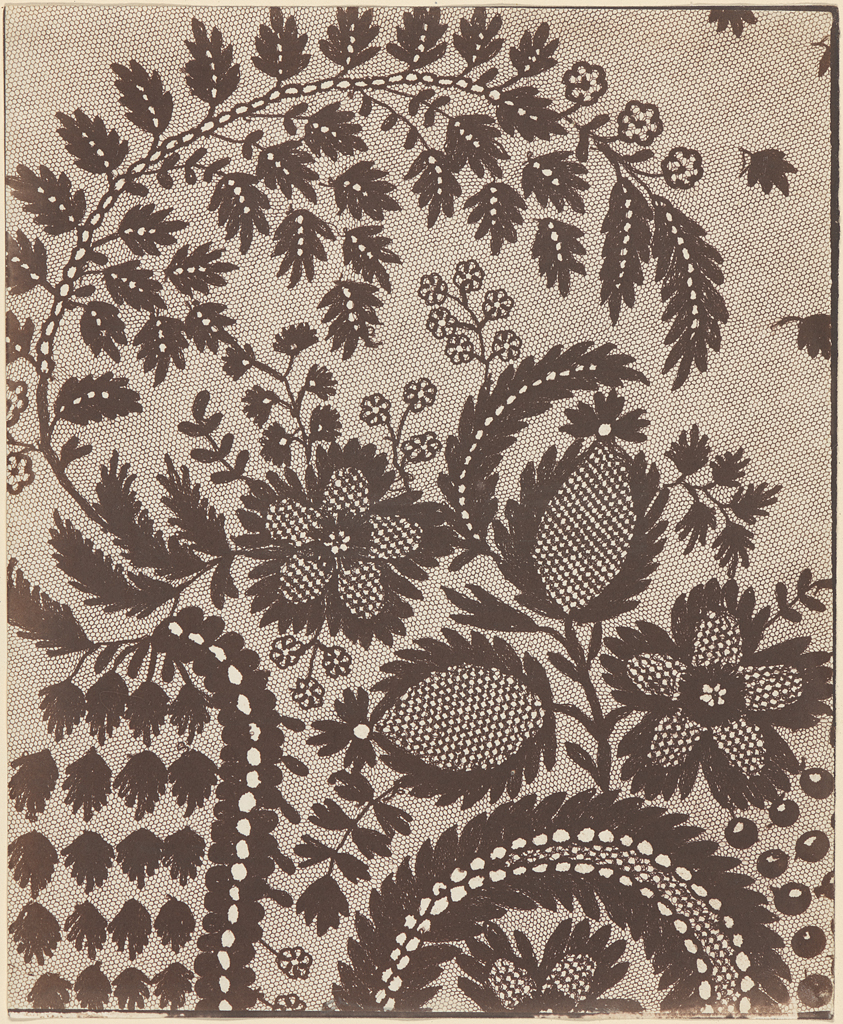William Henry Fox Talbot, Lace, ca. 1845.

This image of lace is an example of a calotype, an early photographic technique. William Henry Fox Talbot, the author of this work, invented the calotype in 1841 as a competing medium to the daguerreotype, another early photographic technique, in which an image imprinted on thin metal. To create this image, Talbot laid a piece of lace upon a sheet of salted paper treated with silver nitrate and then exposed them to light for over an hour. Where the light struck the paper, the paper darkened, and wherever the lace was placed the paper remained white. This treated and exposed paper could then be used as a negative, from which positive images like this one could be made.
This process worked well for subjects like lace, and Talbot hoped that images like these could be used in craft manufacturing to communicate intricate details effectively. This work by Talbot demonstrates that early photographic techniques were not used exclusively to create portraits or to document landscapes and monuments. They also had an industrial purpose.
In addition to its prints and drawings, the Davison Art Center also contains a wonderful collection of early photography, including daguerreotypes, cabinet cards, and stereographs. The Davison collection of photography allows one to see, through diverse examples, how photography developed over time.
We welcome you to explore this photograph in detail on the Davison Art Center’s Collection website.
—Riley Richards ’21

